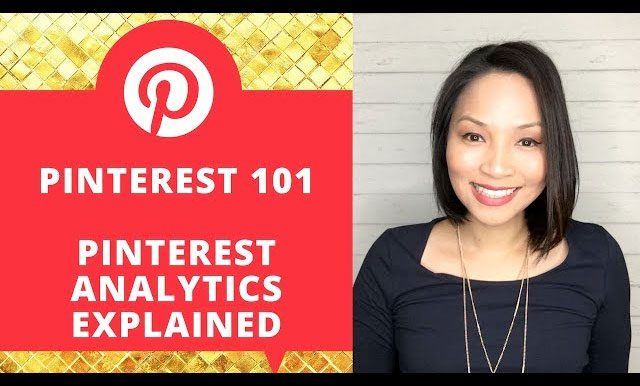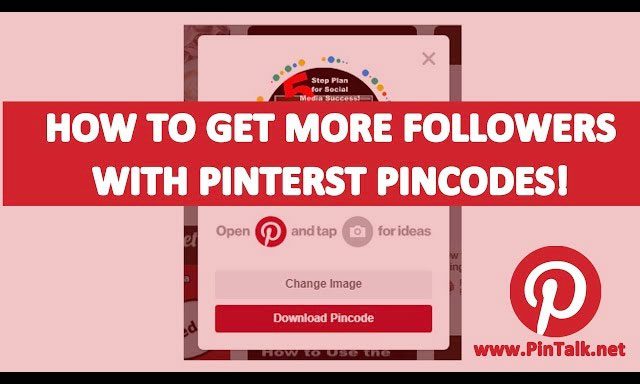Why Online Store Owners Shouldn’t Overlook Pinterest
Facebook, Twitter, and Instagram are often seen as social media royalty, but Pinterest is the real winner for eCommerce businesses.
It’s a great example of a social media channel that understands both the requirements of the everyday user and the potential for driving sales. It’s visual, it’s immediate, it’s inspiring, and it’s also great for SEO and driving targeted eCommerce traffic. From product pins to Pinterest Lens — Pinterest is a great platform for generating sales and repeat customs.
Here’s how to make the most of Pinterest for your eCommerce brand, no matter where you are in your eCommerce journey.
The Numbers: Who Uses Pinterest?
A quick look at some recent Pinterest statistics is a great place to start…
Pinterest has 175 million active monthly users, over 55% of which live outside of the US. Of those users, 2 million save shopping pins to their boards on a daily basis. Information on demographics is equally illuminating. Even though 81% of current users are female — that gap is now closing, with 4/10 new signups being male. Age-wise, the majority of active pinners are below 40, and millennials are now using Pinterest as much as they use Instagram.
Knowing your target audience is essential to any online business. While you already have a great insight into what makes your customers tick, there is always more than you can be doing. Pinterest is a great traffic driver: over 5% of all online referral traffic to websites comes from Pinterest and 87% of “pinners” have purchased a product that they discovered through it. Based on these numbers alone, there is a compelling case for why Pinterest needs to feature as part of your eCommerce strategy.
Things to consider when setting up your store’s Pinterest boards.
Each social media platform has its own unique qualities that separate them from its peers. For Pinterest that comes from their boards and in order to make the most from Pinterest you need to know how to set them up. In order to get set up with a Pinterest business account, decide on your board strategy. You can’t just randomly pin your products or own content: you need to set up a wide range of carefully curated boards that are going to interest your target market.
You need a way of thematically grouping your pins together in order to ensure you get the most out of them. Some of the important things to consider are:
- Trends
- User submitted content
- Curation (don’t just pin your own stuff)
- Aesthetics (think about your visual language)
- Color
- Product boards (best done under themes)
Once you’ve got a clear strategy for how you’re going to go about creating your boards, you need to map them out and start pinning. Mix up your boards from time to time, and don’t be afraid to archive ones you no longer use.
Here are three board pinning strategies your eCommerce business will want to try:
1. Seasonal Shoppers
Pinterest lets you organize your boards according to different plans, ideas, and interests. Adding a seasonal element to your Pinterest strategy means that you can gear your online store to take advantage of some of the most popular seasonal peaks for shopping. Here are some of the examples of Christmas boards that brands have set up:

2. Niche Right Down
Some online stores suffer from trying to broaden out the niche interest of their business to cover as many areas as possible. Your niche isn’t something to run away from: it’s what makes you unique and is the thing your customers want to see more of.
Creating a niche Pinterest board is a great way of connecting with your core audience. Think about all the subsets of your wider niche, and how you can create boards that speak to these specific topics.
But don’t stop there: joining niche group boards gets your online store out to a community of people interested in the areas that are also important to your brand. Signing up to one gives you a chance to broaden your customer base.
3. Targeted Lifestyle Boards
But don’t forget to draw the dots between your target audience and your brand — you want to promote your brand as part of a coherent customer lifestyle.
This board from fashion brand Zappos is an excellent example of how to create boards that are geared towards a clear target audience.
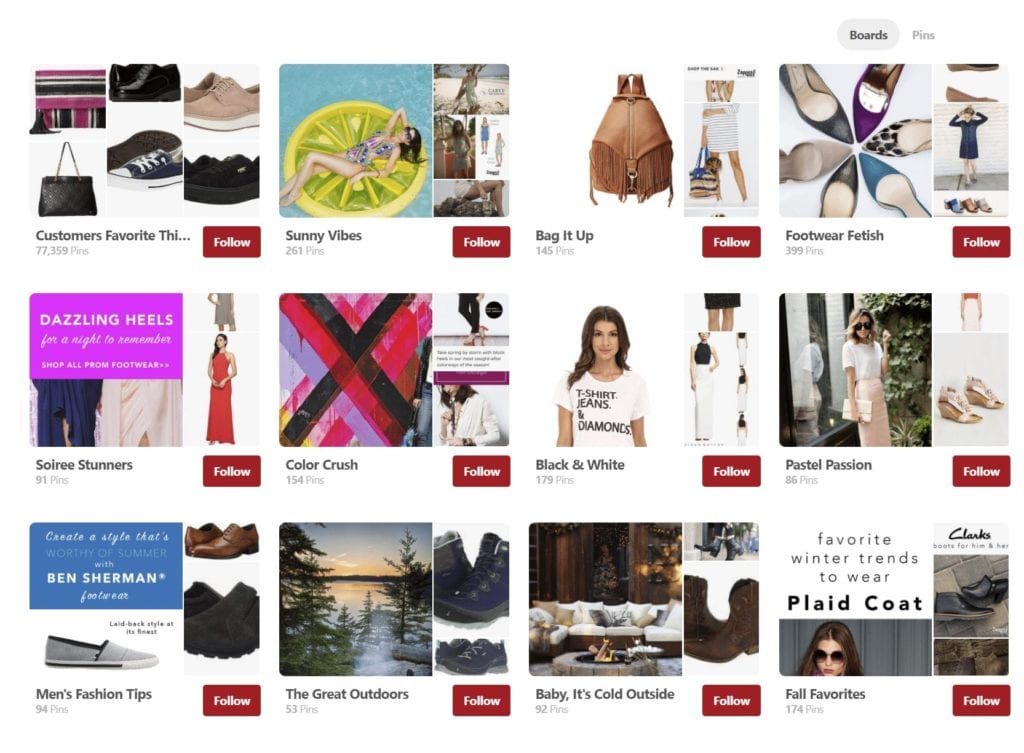
From cosy holiday shots to curated product boards with fun names like “Footwear Fetish”, Zappos is committed to creating a fun Pinterest experience. They are also more likely to pick up a wide range of referral traffic by opening up their board strategy in this way.
Drive Traffic Quickly and Easily
Pinterest is packed with a host of impressive features that will help drive business to your online store. For starters, a crucial way of driving traffic to your products is by using the Pinterest Save button – which allows people to save your content and products to their own Pinterest boards. In this way, anyone can advertise your products free of charge.
By ensuring that all the products and pages of your online store have their own Pinterest button, you’ll make it easier for anyone to share them. Just ensure you have correctly set up all the sharing settings so that any images and copies being pulled through are compelling for the user.
In WordPress, you will need to install a social share or WordPress Pinterest plugin, whereas some off-the-shelf CMSs like Shopify have in-built social sharing functionality.
But that’s not all you can do to make sure your Pinterest account is doing its best to drive traffic to your online store. There are a whole host of tools that can help you streamline the way that you use Pinterest, giving you the ability to upload more content and generate more traffic from the platform
Olapic is a two-in-one tool that allows you to source user-generated content to use in your Pinterest account, along with providing a range of analytics that help you to track engagement, influencer interactions, and ROI.

Taking advantage of one or more of the many useful Pinterest tools is all good and well; but if you’re not making the most of the analytics that Pinterest provides you with, your online store is missing out on a huge opportunity.
The video below is a great introduction to how you can make sure you are getting the most out of all the Pinterest data you have at your disposal. If you’re not already applying these principles then your online business could experience a huge boost in ROI once you have applied them.
Buyable Pins and Shopping on Pinterest
One of the key reasons you shouldn’t overlook Pinterest is that you can sell your products on there for free.
Setting up buyable pins means that your customers can buy items directly from your Pinterest account, without even having to go to your online store. Sounds great? It is. But is it simple to bring to your online store? You bet it is.
- Step 1: Apply for buyable pins
- Step 2: Once you’ve received approval, you’ll be able to be able to add products to your Pinterest account using a protected products board – it can take up to five days for your products to become available to sell once you’ve added them to your protected product board
- Step 3: Make sure people can find your buyable pins. There’s plenty you can do to make this a reality, and this article has some of the best tips on how to make your buyable pins visible.
Adding buyable pins to your online store can be a huge boost to your business. While Twitter, YouTube, Facebook, and Instagram all have more monthly users, none of them can match Pinterest for its purchase popularity among users.
As marketing guru Neil Patel explains in this infographic:
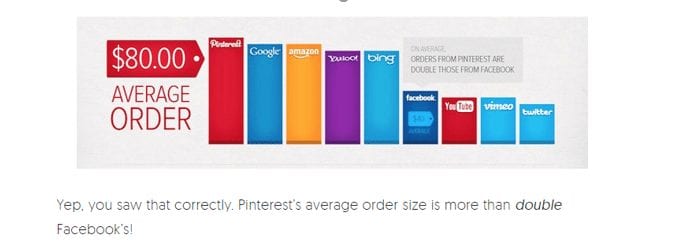
Neil believes that adding buyable pins to your online store can potentially drive 328% more sales for your business, and that’s a figure you just can’t ignore.
Build Your Community
As with all social media platforms, the more you put into Pinterest, the more you get out. This doesn’t just mean the regularity with which you pin your own images, but also the way you share other users’ content and engage with their posts. Re-pinning products and images outside of what you offer helps build an aesthetic and mission statement for your business, as well as encourage others to share your pins and drive traffic to your online store.
I spoke earlier about not watering down what makes your business special. However, positioning yourself as a brand that cares and who engages with your audience in a way that you can create a community spirit without spreading yourself too thin.
Lulus is a business that sells “Cute Dresses, Tops, Shoes, Jewellery, & Clothing For Women.” But that doesn’t stop them from showing their audience that they’re thinking about them. See their board below for useful DIY tips.
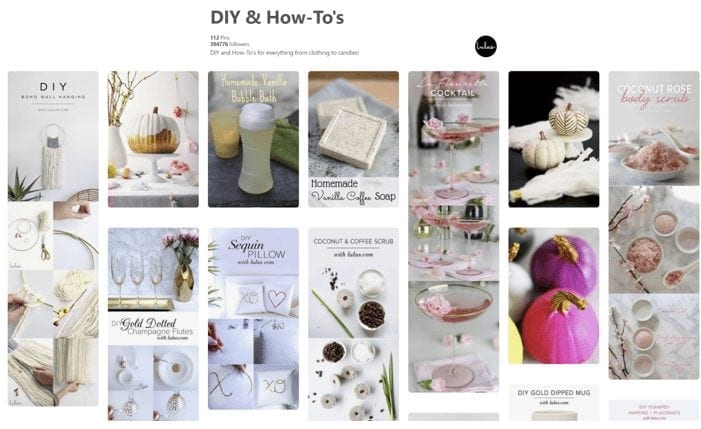
It’s all about building a community of like-minded people and creating engaging content for your target audience. Don’t just try to push your products — create useful and user-oriented content like how-tos.
Consider the other businesses and influencers that you would like aligned with your brand. Who has a similar demographic without being a direct rival? Co-marketing and co-pinning could be a great way to tap into a larger user base.
AI Enabled
2018 is set to be the year when AI finally becomes an integral part of our everyday life. A particular AI feature that should not be overlooked is Pinterest’s Shazam-like image app: the Pinterest Lens. This allows the user to point their smartphone at any object — and Pinterest will then serve up similar image results from its content database.
There’s also a new “Lens your Look” feature which enables users to snap an item of clothing they own and then Pinterest will provide ideas for how to wear it. All fashion brands should be looking into ways of upping their visual commerce game when it comes to styling and curating products.
Pinterest Pincodes
If you’re in the UK, US, or Canada and have a business account with Pinterest, there’s another new feature that should not be overlooked: Pincodes. Similar to QR codes, they are special codes that take people through to a designated Pinterest board when scanned with a smartphone.
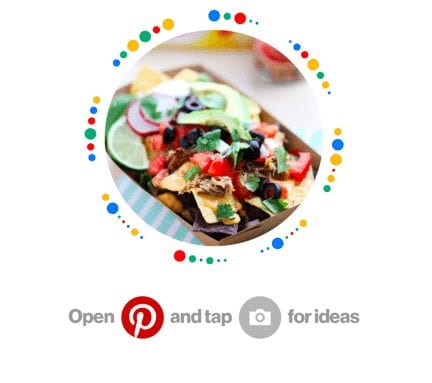
It’s a clever way of giving customers extra content and bringing them closer to your brand and will be especially useful for any multichannel stores that have a physical retail outfit as well.
If you want to find out how you can get more followers and more customers using Pincodes, the video below is the perfect place to start.
Become a Thought Leader
Another reason for not overlooking Pinterest is that it’s a great tool for helping to establish your business as a market leader and authoritative voice in your chosen field.
Instructographics are a particular favourite of the Pinterest user. These ‘how to’ posts tend to be multi-panelled visual that tells the user how to do something in great detail. It’s a handy way of distilling a process that you’re an expert in into a visually appealing and useful series of images. (Get some help here on how to DIY a great visual brand).
Cake decorating and recipe company Wilton’s have a series of content that they’ve produced to position themselves as a thought leader within the baking space. This example below is just one of the many they’ve created.
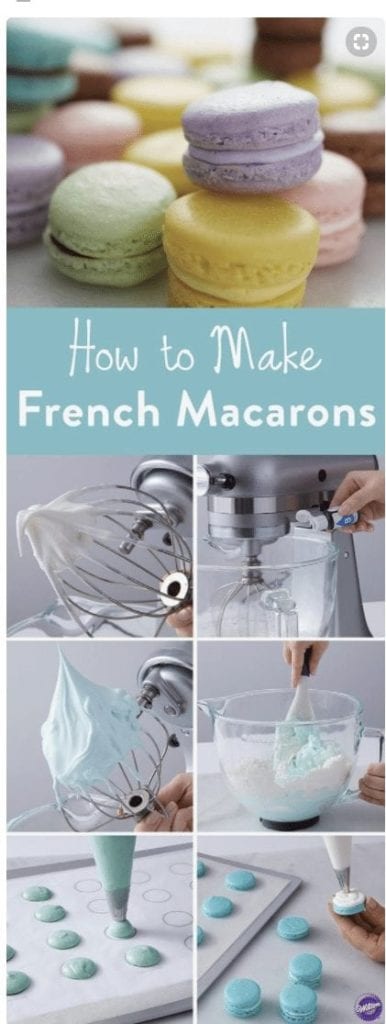
Rather than just giving your followers the hard sell, you’re adding value and strengthening their bond with you. You can take them on an exciting journey with you and let them take ownership over their social interactions with you.
Pinterest is at the heart of key technological advances that are driving e-commerce sales, and it’s a social media platform that’s the ideal place for new brands to establish themselves. Just make sure that you are making the most of all the features that Pinterest has to offer and that you keep the focus very much on community building.

